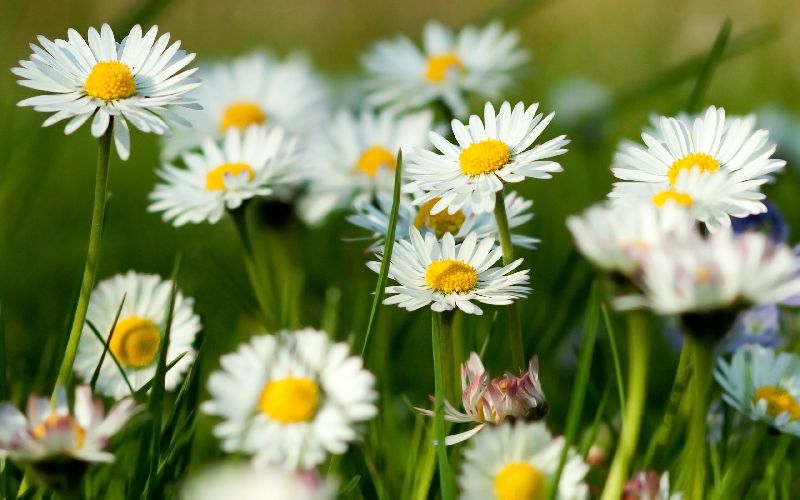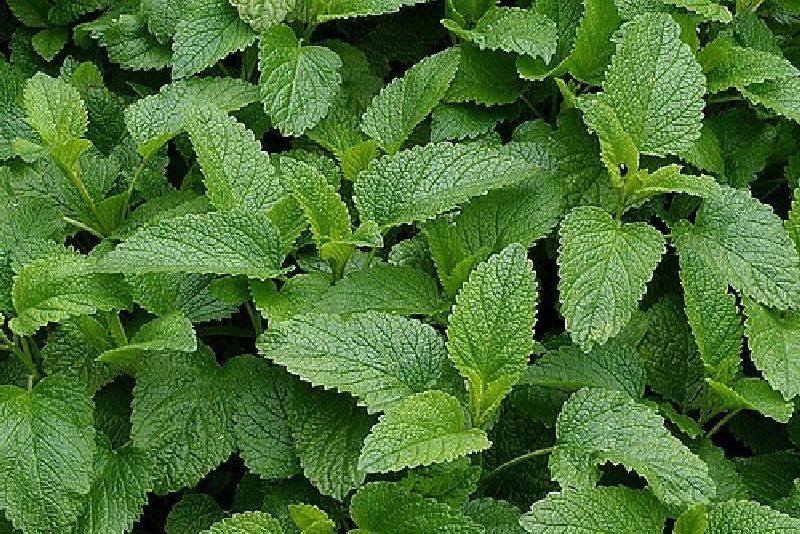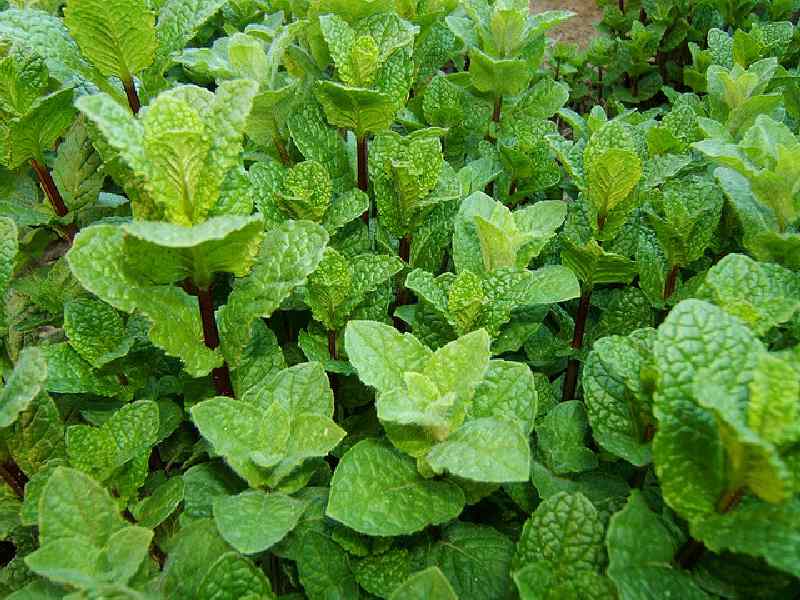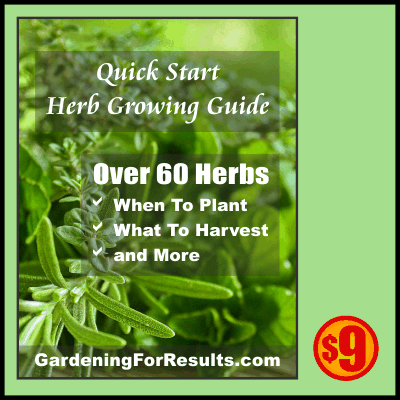Every medicinal herb garden should include these 5 perennial herbs, chamomile, yarrow, lemon balm, echinacea and peppermint. These five basic herbs are safe and effective for the vast majority of people when used as simple teas, poultices or salves.
Chamomile

What it is:
There are two varieties of chamomile: German Chamomile and Roman Chamomile. German Chamomile is an annual plant with a hollow central disk, whereas Roman Chamomile is a perennial plant with a solid central disk. Both are used interchangeably by herbalists.
Medicinal Uses:
Hay fever, inflammation, muscle spasms, menstrual disorders, insomnia, ulcers, wounds, gastrointestinal disorders, rheumatic pain, and hemorrhoids
How it’s used:
Infusion (as a drink), liquid extracts, oil, massage oil, poultice, compress, creams, salves.
Seed Sources:
Organic German Chamomile Seeds: Non-GMO, Certified Organic Heirloom Seed Packet
Organic Roman Chamomile Seeds: Non-GMO, Certified Organic Heirloom Seed Packet
Academic Reference:
http://www.ncbi.nlm.nih.gov/pmc/articles/PMC2995283/
Golden Yellow Yarrow

What it is:
Yarrows are easy to care for and versatile. They are good for borders, rock gardens, or wildflower meadows. Flowering begins in spring and continues into late summer. It is highly adaptable to various types of soils and to will grow in moist to dry ones.
Medicinal Uses:
Yarrow Tea is a good remedy for severe colds, being most useful at the start of fevers. It opens the pores freely and purifies the blood and is recommended in the early stages of children’s colds.
How it’s used:
The tea is made with 1 oz. of dried herb to 1 pint of boiling water, drink warm, in 5-6 oz. doses. It may be sweetened with sugar, honey. It opens the pores freely and purifies the blood, and is recommended in the early stages of children’s colds, and in measles and other eruptive diseases.
Seed Sources:
Heirloom Non GMO “Golden Fleece” Yellow Yarrow 50 seeds (Ornamental, Medicinal)
Academic Reference:
http://www.ncbi.nlm.nih.gov/pmc/articles/PMC3232110/
Lemon Balm

What it is:
The leaves have a gentle lemon scent. During summer, small white flowers full of nectar appear. Lemon balm grows in clumps and spreads vegetatively, as well as by seed.
Medicinal Uses:
Used medicinally as an herbal tea, or in extract form. It is used as a mild sedative or calming agent and to treat anxiety.
How it’s used:
To make lemon balm tea, add a handful of lemon balm leaves to 1 cup of water and steep for at least five minutes.
Seed Sources:
Academic Reference:
http://www.ncbi.nlm.nih.gov/pmc/articles/PMC4245564/
Echinacea

What it is:
Echinacea is a North American species of flowering plant in the sunflower family. It is native to eastern North America and present to some extent in the wild in much of the eastern, southeastern and midwestern United States as well as in the Canadian Province of Ontario. It is most common in the Ozarks and in the Mississippi/Ohio Valley.
Medicinal Uses:
It’s leaves and root can both be used in herbal medicine. Echinacea is used against many infections including the flu, urinary tract infections, vaginal yeast infections, genital herpes, bloodstream infections (septicemia), gum disease, tonsillitis, streptococcus infections, syphilis, typhoid, malaria, and diphtheria.
How it’s used:
Medicine can be made from it’s leaves, flower and root.
The University of Maryland Medical Center indicates adults use it as follows:
For general immune system stimulation, during colds, flu, upper respiratory tract infections, or bladder infections, choose from the following forms and take 3 times a day until you feel better, but not for more than 7 – 10 days:
2 grams dried root or herb, as tea
2 – 3 mL of standardized tincture extract
6 – 9 mL of expressed juice (succus)
0 mg of standardized, powdered extract containing 4% phenolics
Tincture (1:5): 1 – 3 mL (20 – 90 drops)
Stabilized fresh extract: 0.75 mL (15 – 23 drops)
Apply creams or ointments for slow-healing wounds as needed.
Seed Sources:
Academic Reference:
http://www.ncbi.nlm.nih.gov/pmc/articles/PMC1193558/
Peppermint

What it is:
Peppermint is a fast-growing plant. Once it sprouts, it spreads very quickly. The rhizomes are wide-spreading, fleshy, and bare fibrous roots. The leaves are broad, dark green with reddish veins. The flowers are purple with a four lobes.
Medicinal Uses:
Peppermint used to soothe an upset stomach, aid digestion treat headaches, skin irritation, nausea, diarrhea, menstrual cramps and anxiety associated with depression. It has a calming and numbing effect.
How it’s used:
You can make a tea with the following recipe from “The Wellness Mama”
1/2 cup dried peppermint leaves
1/4 cup-1/2 cup very finely diced fresh ginger root
1/4 cup dried fennel seeds
Approximately 1 1/2 cups boiling water
Approximately 1 1/2 cups vodka or rum (drinkable variety with at least 40% alcohol content)
Quart size glass jar with airtight lid
Seed Sources:
Academic Reference:
http://www.ncbi.nlm.nih.gov/pmc/articles/PMC2950373/
[/vc_column_text]

